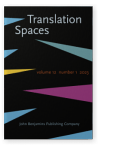Vol. 12:1 (2023) ► pp.45–73
Concurrent translation on collaborative platforms
The advent of AI-supported, cloud-based collaborative translation platforms has enabled a new form of online collaborative translation – ‘concurrent translation’ (CT). CT refers to commercial translation performed on such platforms by multiple agents (translators, editors, subject-matter experts etc.) simultaneously, via concurrent access. Although the practice has recently gained more ground, research on CT is scarce. The present article reports on selected key findings of a study that investigates translators’ experiences with CT via a survey of 804 professional translators working in CT mode across different commercial platforms. Despite the affordances such as peer learning, positive competition, speed, flexibility of the volume of work and working time, and reduced responsibility and reduced stress, CT workflow comes with its substantial challenges such as time pressure, negative competition, reduced self-revision and research, all of which result in quality compromised for speed.
Article outline
- Introduction
- Literature review
- Methodology
- Data analysis
- Sample profile
- Findings
- Platforms used in CT
- Communication on platforms
- Time spent on CT
- Nature of tasks in CT
- Translators’ experiences with concurrent translation (CT)
- Affordances introduced by concurrent translation
- Issues with concurrent translation
- Consequences of the issues associated with concurrent translation
- Limitations
- Conclusion and discussion
-
References
